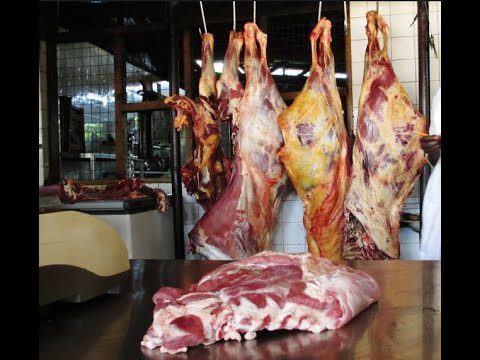Meat outlets in Kenya have been rocked with a fresh food scandal following revelations that unsuspecting Kenyans have been consuming meat laced with dangerous chemicals to make it fresh.
A damning expose by a local television station has unearthed the lengths at which vendors go to make a profit with total disregard for the health of their consumers.
According to the expose, most of the meat vendors are guilty of adding Sodium meta-bisulphite and other undeclared chemicals to meat, including beef, chicken, fish and mutton to keep the meat look fresh.
The chemical comes in the form of a white powder and is generally used as a disinfectant, antioxidant and preservative.
Once consumed in excess, it may trigger allergic reactions and experience a lot of wheezing and coughing with no explanation and for pregnant women, the flow of oxygen to the baby might be affected.
The danger is heightened for asthmatics.
Rogues supermarkets and butchery officials were singled out as the most notorious, after it was revealed that they lace meat with the dangerous chemicals to make it appear fresh longer, and to minimise losses from spoilage.
The expose by NTV television highlights that the public health is not guaranteed as a result of the practices in handling of the food of animal origin particularly the meat.
According to an expert who spoke to the African Press Agency, uncontrolled use of preservatives in meat, unhygienic handling of meat and uncontrolled use of veterinary medicines in food animals has been on the rise posing a great danger to the human health and consequently the meat safety.
The national chairman, Kenya veterinary association, Dr. Samuel Kahariri pointed out to the African Press Agency on Wednesday that It is worth noting that Sodium meta-bisulphite is listed in Food, Drugs and Chemical Substances Act CAP 254 as a class I preservative in meat and meat products, fish, Poultry meat with a maximum residue limit of 500p.p.m.
“However, its use in butcheries and meat outlets poses a great health risk since it is never disclosed to the consumers and further the amounts used are mere estimations leading to a risk of exceeding maximum level of use and consequently compromise human health,” he warned.
He noted that veterinarians have a responsibility of ensuring that food-borne risk to public health are minimized through ante and post-mortem inspection of animals in the slaughter houses.
Further, he noted the veterinarians should raise awareness on the value chain actors on the measures required to assure food safety.
Currently Kenya has over 2500 slaughter facilities in the entire country with only about 500 meat inspectors.
“This makes it practically impossible to conduct Ante mortem examinations in the animals since its required to be done before slaughter. This has seen a sharp rise in unscrupulous practices by traders who take sick, feverish and in some few cases already dead animals for slaughter,” he pointed out.
“Consequently, the carcasses have may result to spread of zoonotic diseases and/or they have a very short shelf life owing to poor bleeding and this may explain why a few unscrupulous traders result to prolong the shelf life and improve appearance of the carcass by use of chemical compounds as recently exposed,” he added.
He noted that whereas the chemical preservatives are recognized for use under the Kenyan law, there lacks a clear guidelines and control on its use in the unprocessed meat, making it often likely to exceed the Maximum Residue Limit when used thus rendering the meat unfit for human consumption.
He further blamed the problem to the shortage of meat inspectors in the country pointing out that currently there is only one meat inspector in charge of 9 slaughter facilities.
“In cases where it may not be possible to employ a veterinary doctor or a veterinary paraprofessional, we urge the government to cause immediate closure of such facilities to curb the rise in the meat adulteration and uphold public health,” Kahariri noted.
JK/as/APA


